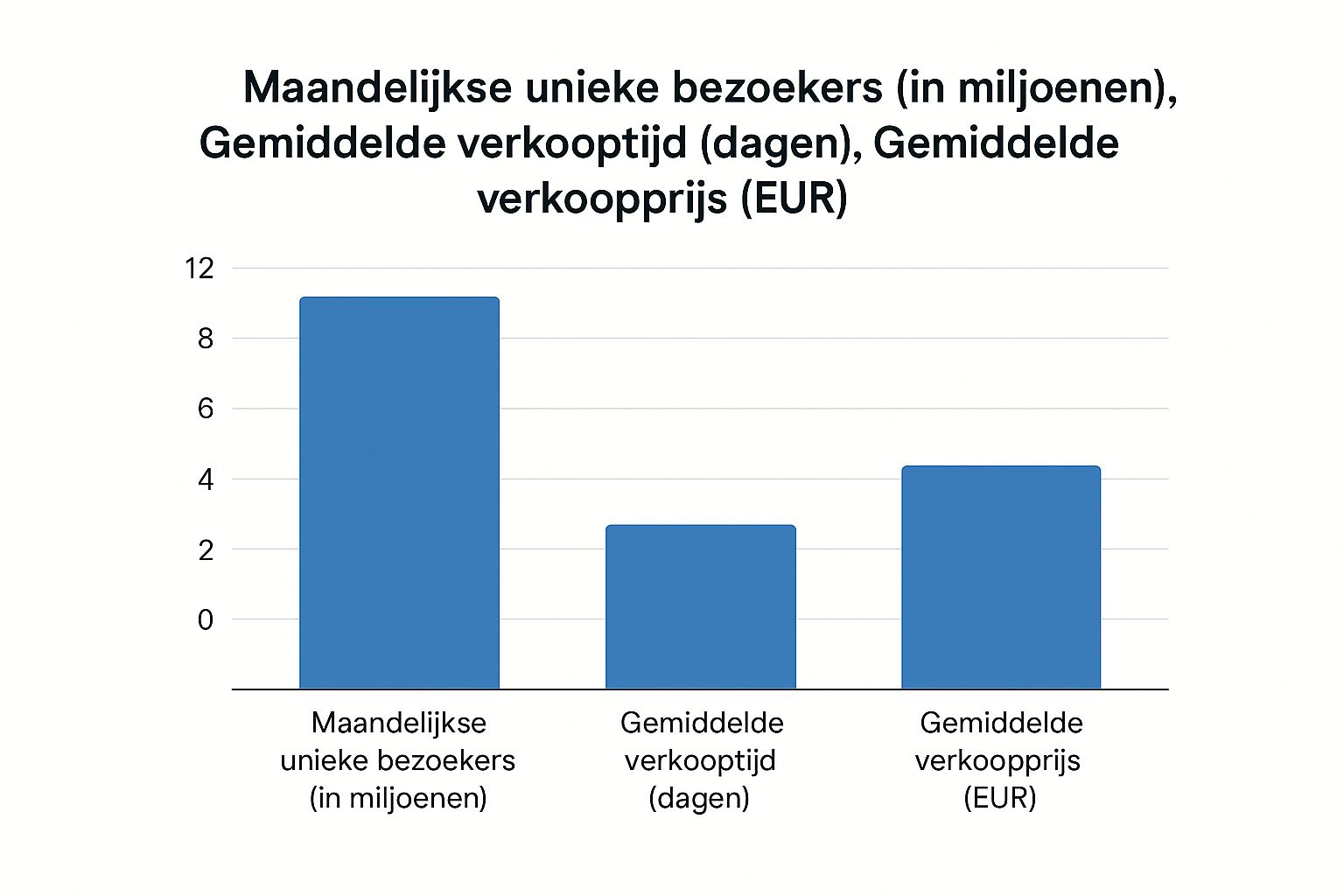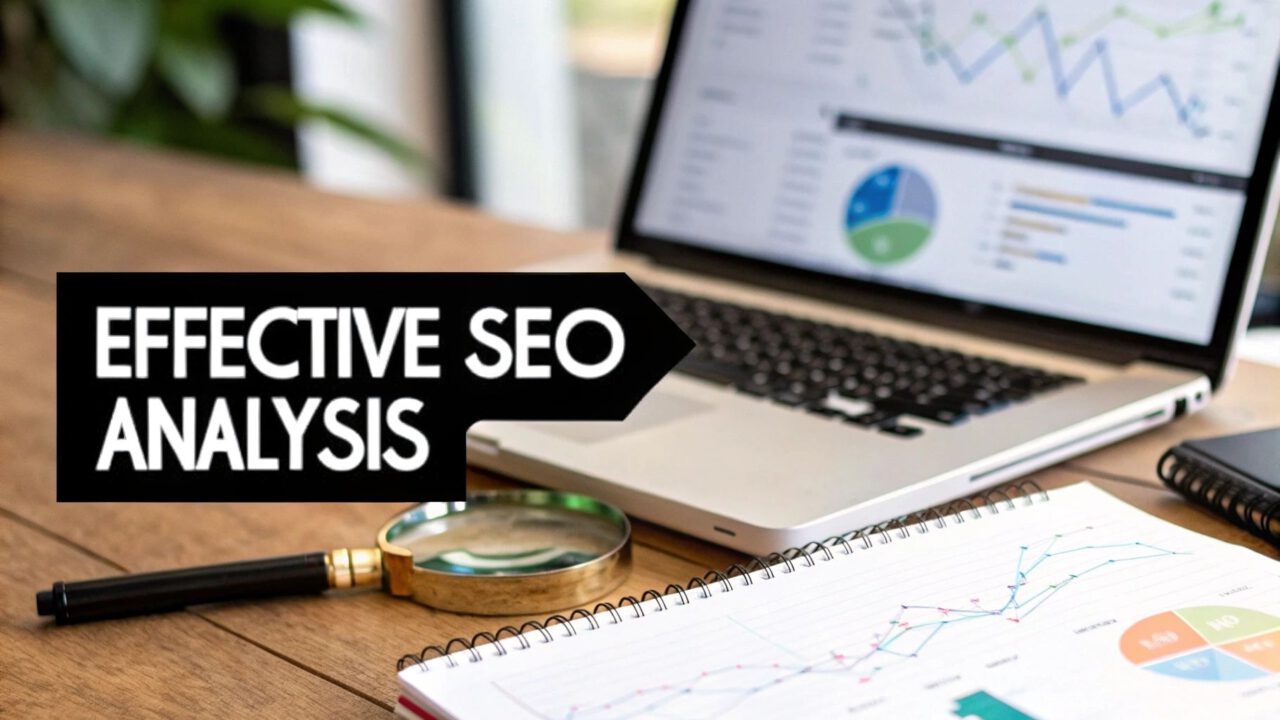Your first step into the world of online marketplaces is the most important. It's not just about choosing an additional sales channel; you're going to strategic partnership The right partner can give your growth a huge boost, while a bad match will mainly cost you time, money, and frustration. Successful selling on marketplaces So it starts with finding a partner platform where your brand and products truly belong.
Choose the right marketplace as a partner
It's tempting to immediately go for the most recognizable name, but the reality is often more nuanced. A successful partnership depends on much more than just visitor numbers. You should view a marketplace as an extension of your own business. You're relinquishing some control over the customer experience, so it's crucial that the platform's values and working methods align with yours. A good partnership makes everything easier.
The Belgian e-commerce market is booming and offers enormous opportunities. This market recently reached a turnover of 17.4 billion euros, an increase of 10,7%Experts even predict further growth towards 24 billion euros. These figures demonstrate enormous potential, provided you forge the right partnerships.
Analyze the target group and platform DNA
Each marketplace has its own atmosphere, its own DNA, and therefore attracts a specific audience. Bol.com is a household name in the Benelux, with a loyal customer base that counts on a wide range and fast, reliable delivery. Etsy On the other hand, it's a completely different world: buyers come there for unique, handmade, and vintage items. They seek a story and authenticity. A successful collaboration starts with understanding each other's audience.
To find the perfect match, ask yourself these questions:
- Who is my ideal customer? Is he looking for the lowest price, a unique product or mainly for convenience and speed?
- What image does the platform have? Does the marketplace's appearance match my brand's positioning?
- What does the competition look like? Am I selling something unique, or am I standing among dozens of competitors with similar products?
A golden partnership is created when the platform's target audience seamlessly aligns with your ideal customer. A premium, handmade piece of jewelry will likely thrive on a platform that values craftsmanship rather than a marketplace focused on mass production and rock-bottom prices.
The best partner isn't always the biggest. It's the platform that puts your products in front of the right audience and gives you the tools to grow together, without losing your brand identity.
The impact of committees and support
Of course, the financial side of things is also crucial for a healthy partnership. Commission structures vary greatly between platforms and even product categories. These costs directly impact your profit margin, so delve deeper. A low commission might sound appealing, but what if you receive minimal support?
Compare these aspects thoroughly:
- Commission per sale: Is it a fixed percentage or a combination of fixed and variable costs?
- Subscription costs: Some platforms charge a monthly fee on top of the sales commission.
- Seller Support: Does the platform offer concrete help with logistics, marketing or technical issues?
A platform that truly invests in its sellers—with training, useful data insights, and a smooth helpdesk—is a much more valuable partner in the long run. This support makes collaboration easier and helps you grow faster. Did you know that SMEs can sometimes apply for subsidies? So be sure to read about it. SME portfolio can support you in your digital growth.
Comparison of top marketplaces in Belgium
A practical overview of popular marketplaces to help you choose the best partner for your business, based on their strengths and target audience.
| Marketplace | Type of seller | Popular categories | Commission structure | Ideal partnership for |
|---|---|---|---|---|
| Bol.com | Both major brands and SMEs | Electronics, books, toys, home & garden | Percentage per sale + fixed contribution (variable) | Companies that want to reach a large and broad Benelux audience. |
| Amazon.nl | International sellers and local entrepreneurs | Everything from A to Z, strong focus on electronics & media | Monthly subscription + percentage per sale | Salespeople with international ambitions and a focus on price competition. |
| Zalando | Established and emerging fashion brands | Clothing, shoes, accessories | Commission per sale (by invitation) | Fashion brands that want to increase their visibility in Europe. |
| Etsy | Independent makers, artisans, vintage shops | Handmade, vintage, unique gifts, craft supplies | Listing fee per item + percentage per sale + transaction fees | Creative entrepreneurs who are looking for a community and have a unique product. |
| 2dehands.be | Private individuals and professional (local) sellers | Cars, furniture, electronics, services | Free placement with optional paid ads | Local businesses and sellers of second-hand goods and services. |
This table is a starting point. Dive into the details of each platform you're considering to ensure the partnership is the right choice for your specific situation.

The data above reveals something interesting: a higher number of visitors doesn't automatically lead to the highest sales price. This further emphasizes the importance of choosing a partner that truly connects with your target audience.
Product listings that actually sell: setting up your digital shop window
You've chosen your marketplace. Perfect. That's a solid foundation, but now the real work begins: presenting your products in a way that attracts buyers. A strong product listing is much more than just a title and a few photos. Think of it as your best salesperson, working 24/7 in the showcase your partner platform offers.
Online, a customer can't hold or try your product. Your listing must bridge that gap. The mission isn't just to inform, but to give customers the confidence they're making the perfect choice.

Titles that grab attention and score in search results
Your headline is the first impression. It's the digital handshake that should convince a visitor to take a look inside. A good headline is a clever mix of keywords for the platform's search engine and a direct message for the human reader. Smooth collaboration with the algorithm begins here.
Get inside your customer's head. What words are they typing into the search bar? A title like "Leather bag" means nothing and disappears into the crowd. Take a different approach:Handmade Leather Laptop Bag for Women – Vintage Brown – Suitable for 15 inches".
Look at what this title does:
- What is it? Leather Laptop Bag
- For whom? Ladies
- Which style? Handmade, Vintage Brown
- Important detail? Suitable for 15 inches
These details not only help the algorithm position you correctly, but also immediately appeal to the right buyer. Be specific. Emphasize what makes your product special.
Product photos that tell the story
A picture is worth a thousand words. Cliché, but a golden rule in e-commerce. Good photos are crucial for the purchase decision. They should show not only what the product looks like, but also what it feels like to own it.
Professional photos aren't a luxury, they're an absolute necessity. Ensure you have a diverse range of images that together tell a complete story.
- Studio-ready photos: Showcase your product in crystal clear clarity against a white background. From every angle. No surprises for the buyer.
- Atmospheric images (lifestyle): Show the product in action. A hammock in a sunny garden, a necklace around a model's neck. This helps the customer imagine how the product fits into their life.
- Detail shots: Zoom in on the unique features. The texture of the fabric, the finish of a seam, the closure mechanism. This exudes quality and confidence.
- Scale and dimensions: Add a photo of an everyday object (a coin, a hand) to illustrate the size. This prevents many disappointments and returns.
Your photos should answer questions a customer didn't even know they had. They compensate for the lack of physical interaction by conveying every detail with crystal clarity.
Descriptions that convince, not just list
After the title and photos, the description is your chance to close the deal. Many sellers resort to a boring list of specifications. A strong description goes further: it resonates with the customer and solves a problem.
Work with short, scannable paragraphs and clear bullet points. Start with a sentence that immediately emphasizes the biggest benefit. Then focus on what the product does. do for the customer, not just on what it is.
A small example of the difference:
- Feature: "This backpack is made of waterproof nylon."
- Advantage: "Keep your laptop and papers safe and dry, even during an unexpected downpour, thanks to the waterproof nylon."
You translate a technical detail into a concrete solution. That's what sells.
It also helps to know the Belgian market. E-commerce in Belgium is a busy playing field. The largest category is Food & Beverages with 7,570 stores (33,96%), followed by Clothing with 3,800 stores (17,06%) and Home & Garden with 2,110 stores (9,45%)These figures, found in an analysis of the Belgian e-commerce market on aftership.com, show where competition is fierce, but also where the greatest opportunities lie. Are you in a popular category? Then it's even more important to powerfully highlight your product's unique benefits.
Always end your description with a clear call to action. "Add to cart now and enjoy tomorrow..." Be clear, compelling, and remove any doubt.
How do you determine a profitable price?
The right pricing strategy is the driving force behind your success on online marketplaces. It's a delicate balance. You want to be competitively priced to attract customers, but at the same time, you need to maintain sufficient margin. Therefore, the perfect price isn't a gamble, but a strategic choice that directly impacts your brand perception and your profits.
Many startups make the mistake of blindly copying their competitors' prices. A competitive analysis is certainly important, but it's only one piece of the puzzle. You also need to factor in your own costs, the unique value of your product, and the marketplace's commissions.
Don't view a platform's tools and pricing rules as limitations, but as resources. They often offer data and automation that help you price smarter and truly collaborate as partners for the best results.
Work with dynamic pricing and smart bundles
A fixed price is rarely the most profitable. The market is constantly changing, driven by demand, supply, and the actions of your competitors. That's where dynamic pricing plays a role. Simply put: your prices automatically adjust based on rules you set.
Imagine you're selling a popular pair of headphones. With a dynamic pricing tool, you can set your price to always be €1 is lower than the cheapest competitor, but never below your minimum price of €59 This kind of automation ensures you stay competitive without having to constantly compare prices yourself.
Another rock solid tactic is to make product bundlesBundles increase average order value and make customers feel like they're getting a better deal.
- Logical combinations: Sell a camera together with a memory card and a carrying case for an attractive package price.
- Volume discount: Offer a discount if someone buys three pairs of socks instead of one.
These tactics work best when seamlessly integrated into the platform. They make it easier for customers to spend more and simpler for you to sell more.
Without good inventory management, there is no growth
A perfect pricing strategy is worthless if your product is out of stock. Nothing is more frustrating for a customer than placing an order only to be told it's sold out. This not only damages your reputation but can also lead to sanctions from the marketplace.
Synchronized inventory management is crucial, especially if you sell on multiple channels—for example, a marketplace and your own online store. A sale on Bol.com should immediately update the inventory on your own site, and vice versa. This prevents duplicate sales and disappointed customers.
Inventory management is the silent force behind a smooth sales process. It ensures a reliable customer experience and lays the foundation for a scalable e-commerce operation.
Fortunately, you don't have to do all of this manually. There are numerous software solutions that synchronize your inventory levels across different platforms. These tools act as a central hub, significantly simplifying your administration and drastically reducing the risk of human error. Are you considering starting your own online store in addition to marketplaces? Then know that A complete webshop can be purchased from €1500 a viable investment that gives you much more control.
Use data to sharpen your strategy
The most successful salespeople don't just sail blindly; they adjust based on data. Most platforms offer dashboards with a wealth of information about your sales. Think of this as a form of collaboration: the platform gives you the insights to improve your performance.
Analyze the numbers to discover patterns:
- Which products peak and when? You may see garden tool sales explode in the spring.
- What is the impact of a price change? Did that discount of 10% really led to a significant increase in the number of units sold?
- Which bundles are popular? This information will help you come up with new, even better combinations.
By analyzing this data, you can continuously optimize your pricing strategy and inventory planning. This allows you to proactively respond to market trends, instead of reactively chasing them.
Turn your logistics into a secret weapon
The deal's closed, the customer has paid. Great! But now begins a phase that many sellers often underestimate: logistics. This is so much more than just getting a box from A to B. Think of it as your first, and perhaps only, physical contact. It's the opportunity to deliver on the promise of your product page. Flawless shipping isn't a cost, but a powerful marketing tool.
Many new businesses are fixated on the lowest shipping price. Understandable, but it's a short-term vision. The right carrier isn't just a courier, but a partner who helps deliver on your brand promise. Selling on marketplaces Often means fierce competition. That superior shipping experience could be the reason a customer chooses you.

Choose a partner, not a discounter
Your choice of shipping partner depends entirely on what you're selling. Are you shipping fragile, handmade vases? Then careful handling is far more important than pure speed. Do you sell popular gadgets? Then customers probably expect their package to arrive tomorrow.
Your carrier should be an extension of your business, not a faceless service. So ask yourself a few critical questions before doing business with a carrier:
- Does their service fit my product? Do they have special options for fragile, oversized, or even refrigerated goods?
- How flexible are they? Can the customer choose home delivery, a collection point or a convenient parcel machine?
- Is their tracking foolproof? Do you and your customer receive clear, proactive updates about where the package is?
A truly good partner thinks along with you. For example, they offer simple integrations with the marketplace you're selling on, which makes collaboration smoother and saves you a lot of administrative headaches.
Be crystal clear about costs and packaging
Nobody likes surprises at checkout. In fact, unexpected charges are the number one reason for abandoned carts. So be completely transparent about shipping costs from the start.
Make those costs clear on your product page, not hidden until the last step of the checkout process. Do you offer free shipping over a certain amount? Make that a strong selling point!
Your packaging also communicates. A product rattling in an oversized box, stuffed with crumpled newspaper, screams amateurish. Invest in sturdy, well-fitting boxes and quality padding. A small, personal touch—a handwritten thank-you card or a sticker with your logo—costs next to nothing but can have a huge impact on how the customer experiences your brand.
Turn a return into a victory
A return isn't a loss. It's an opportunity to prove your customer service is top-notch. A difficult, slow, or expensive returns process guarantees a bad review and a customer you'll never see again. So make it as easy as possible for your customer.
A flexible and customer-friendly returns policy builds trust. It shows you stand behind your products. This can be the clincher for that one hesitant buyer.
Create a returns policy that everyone understands and can easily find. Offer a pre-printed return label or a simple online tool to print one. Be clear about the steps and the timeframe for refunds.
A customer with a positive return experience is much more likely to return to you for another purchase. This way, you turn a potentially negative experience into proof of your trustworthiness. And that, dear salesperson, is how you cultivate loyal customers.
Build a rock-solid reputation
In a busy online marketplace, where customers can't look you in the eye, your reputation is your most important asset. It's more than just a number or a few stars; it's your business's digital capital. You don't build that reputation with one brilliant move, but step by step, with every interaction, every response, and every resolved complaint.
Customer service isn't just a chore. Think of it as your best marketing tool. It's the most direct way to show that behind those product photos is a reliable, human partner who cares about their customers. A buyer who feels heard and supported is infinitely more valuable than an anonymous transaction.
Communication as the cornerstone of trust
The foundation of a rock-solid reputation? Fast, clear, and above all, human communication. When a potential buyer asks a question, they don't just want an answer. They also seek reassurance that someone on the other end is actually listening. Smooth communication is the core of successful collaboration with your clients.
Remember that marketplaces often measure sellers' response times. A quick response can easily earn you a better ranking in search results, which directly contributes to your success in the selling on marketplaces.
The way you communicate, is Your brand's perception. A professional and friendly answer to a simple question can make the difference between a hesitant customer and a loyal, returning one.
Always try to base your communication on these pillars:
- Speed: Respond within a few hours, especially during business hours. A quick response shows you're on top of things.
- Clarity: Give a concrete and complete answer. No jargon, but clear language that everyone can understand.
- Empathy: Show understanding. A simple sentence like "I completely understand your question" or "I'm sorry this happened" can work wonders.
From feedback to an opportunity to grow
Positive reviews are invaluable. They're the social proof that wins new customers over. So don't be afraid to proactively ask for them. A few days after delivery, you can send a friendly, automated email asking if everything was satisfactory and if the customer would like to leave a review. Simple and effective.
Negative feedback, on the other hand, is inevitable. Don't consider it a personal attack, but rather free advice. Always respond publicly, professionally and constructively. Thank the customer for the feedback, apologize if something went wrong, and—most importantly—propose a concrete solution.
A well-handled complaint can turn a frustrated customer into your biggest fan. It shows other potential buyers that you take problems seriously and don't shy away from responsibility. That builds much more trust than a page full of flawless, but perhaps somewhat unbelievable, five-star reviews.
Transparency as the ultimate reputation booster
Trust is everything, especially online. That trust has become so great that even major purchases, such as cars, are increasingly made through marketplaces. Recently, the number of registered used cars in Belgium increased by 0,9% to 373,810 vehicles, a larger share than new cars. This perfectly demonstrates how crucial a reliable reputation is. You can read more about it in the analysis of the Belgian car market on febiac.be.
So always be completely transparent. About your products, your prices, your delivery times, and your return policy. The clearer you are, the less chance of misunderstandings and disappointed customers.
A few practical tips for maximum transparency:
- Be honest about imperfections: Selling a used product with a small scratch? Mention it and post a clear photo online. Honesty pays off.
- Communicate proactively about delays: Problems with your shipment? Don't wait for the customer to call. Inform them yourself.
- Make your returns policy crystal clear: Make sure customers know exactly how, where, and when they can return a product. No fine print.
By consistently focusing on these pillars, you'll build a reputation that not only generates more sales but also lasting customer relationships. Your good name is your best defense against the competition and the foundation for long-term success. Want to learn more? Many of these principles also apply to your search engine visibility, as you can read in our guide on how to determine your chances of ranking in Google.
Questions every aspiring salesperson asks themselves
Delving into the world of online marketplaces inevitably raises questions. It's a landscape brimming with opportunities, but where do you begin? Below, I address the questions I hear most often, with clear, practical answers to help you get started with confidence.

Which marketplace is really the best for beginners?
Here's a hard truth: the "best" marketplace doesn't exist. What does exist is the best match for your product and your customer. So don't get hung up on the biggest names.
For example, do you sell unique, handmade jewelry? Then you probably feel much more at home on a platform like Etsy, where creativity and uniqueness are celebrated. Try selling the same thing on a giant like Amazon, then you quickly disappear into a price war.
So, first consider where your target audience spends their time. Which platform exudes the atmosphere that suits your brand? A good start begins with smooth collaboration and a shared vision.
What costs should I take into account?
This is a crucial question, because fees directly eat into your profit margin. The structure varies greatly from platform to platform, so take the time to figure it out. Most marketplaces use a commission model: a percentage of each sale you make.
But beware, there's often more. Consider:
- Commission per sale: A percentage that often differs per product category.
- Fixed monthly costs: Some professional accounts require a flat subscription fee.
- Advertising costs: Want to stand out? Then you often pay to promote your products.
- Transaction costs: A small fee for processing the payment.
Make a realistic calculation before you start. This way, you can be sure the final bill will be correct and the collaboration will be profitable.
Is your own webshop still necessary in addition to a marketplace?
Strictly necessary? No. A smart move for the long term? Absolutely. Think of a marketplace like a busy shopping mall: you immediately gain access to a huge audience. The downside is that you're building on "rented" land. You're always at the mercy of the rules, the algorithm, and the whims of the platform.
Your own online store is your domain. Here, you have complete control over your brand, your customer data, and your marketing. The ideal strategy? Combine the two. Use the marketplace to attract new customers and your own online store to build a deep, lasting relationship with them.
A marketplace is a fantastic springboard, but your own webshop is your home base. It's where you truly build customer relationships and bring your brand to life.
How on earth do I deal with all this competition?
Competition is a given, especially on popular platforms. The key to success isn't to be the cheapest, but to differentiate yourself. You have to make a difference.
What should you focus on?
- Irresistible product photos: Invest in images that really make your product shine.
- Clear, convincing descriptions: Tell a story. Why should the customer buy your product?
- Top-notch customer service: Be fast, be friendly, and solve problems.
- Positive reviews: Actively ask satisfied customers for reviews. Social proof is invaluable.
Your reputation is your most important asset. A seller with a satisfaction score of 98% And positive reviews can easily command a higher price than a competitor who's less strict. Your reliability as a partner for the customer is what counts.
Building a solid online presence, whether on marketplaces or through your own channels, requires a well-thought-out approach. Expert media we have been helping for more than 21 years Entrepreneurs can tell a strong brand story with high-performing online stores. Ready to take your online sales seriously? Discover what we can do for you at https://www.expertmedia.be.




